Microbiological sanitary quality and agronomic viability of agricultural bioproducts
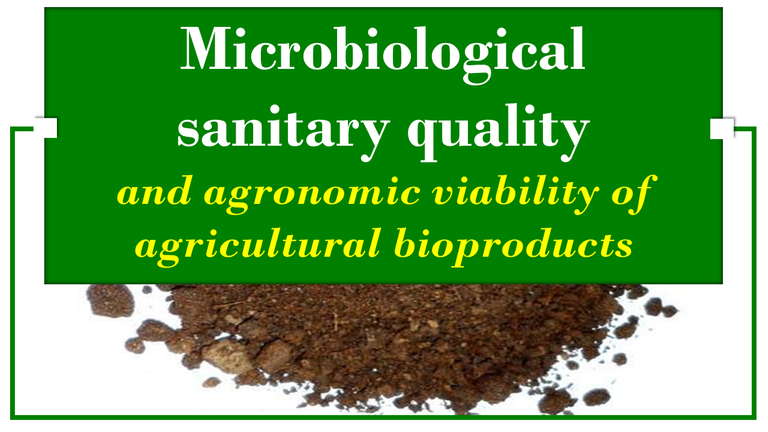
Greetings to all scientific community that coexists in #HIVE, especially to my friends and members of #STEMsocial academic reference community in our blockchain, continuing with the thematic line related to content of practical utility in this opportunity I will be sharing two aspects of vital importance, when assessing the quality of bioproducts among these; Microbiological Sanitary Quality and Agronomic Viability.
Introduction
Unlike Venezuela, South American countries have legal parameters of standardization that allow determining the quality of bioproducts, where the Microbiological Sanitary Quality is one of the most relevant aspects at the time of endorsing products of organic origin.
The quality of bioproducts is evaluated mainly because these products are used in fertilization programs in agricultural crops, whose final destination is food, so it is advisable to issue quality certification only for those bioproducts that are free of microbiological contaminants.
Now, taking into account that previous publications have mentioned the importance of Aquatic Macrophytes in the elaboration of compost (solid bioproducts), and considering that these can have pathogenic organisms, due to the origin of these plant species from highly polluted environments.
Consequently, the objective of this article is to present the results of an experimental trial aimed at presenting methods to determine the microbiological sanitary quality and agronomic viability of these bioproducts.
Conceptual Overview
Pathogenic microorganisms
In any fertilization program where organic products are incorporated, it is advisable to carry out microbiological tests in order to guarantee the absence of microorganisms in the final products such as:
A. Coniformes
B. Salmonellas
C.Escherichia coli
Based on the above considerations, it is necessary to ask the following question.
Why is it important to determine the Microbiological Sanitary Quality of bioproducts?
Health Quality / theoretical foundations
The importance of laboratory analysis of the microbiological sanitary quality of bioproducts, lies in avoiding the application of contaminated products in crops of food interest, preventing the spread of organic materials that generate problems in human health.
These health problems include fever, diarrhea, abdominal cramps, headache, blood in the stool, among other symptoms, caused by infections of Salmonella, Coliform and Escherichia coli, microorganisms that are naturally found in the materials used in the composting process.
It is therefore of vital importance to ensure that bioproducts based on Aquatic Macrophytes are not considered a risk to human health, therefore, laboratory tests must be negative for Total coliforms, fecal coliforms, Salmonella spp. and Escherichia coli.
In addition to the above consideration, pathogenic microorganisms that affect crops either in short cycle or planting phases must also be absent, since their presence in a bioproduct that is intended to be used in a fertilization program will irremediably cause diseases in the phenological development and growth of the plant, hence the importance of performing microbiological tests to rule out contamination by:
A. Fusarium sp
B. Cercospora sp
C. Alternaria sp
D. Phytophthora infestans
E. Colletotrichum sp
F. Melminthosporium sp
G. Esclerocio
Agronomic feasibility / theoretical foundations
In relation to agronomic viability, it is another aspect, no less important in determining the quality of a bioproduct, because it is a criterion that allows a prior evaluation at the nursery level, through germination bioassays, assessing the phytotoxicity of organic products before their application in the field.
Agro-morphological field study
Experimental aspects
In order to determine the microbiological sanitary quality and agronomic viability of bioproducts based on Limnocharis flava L., Ranunculus flagelliformis, and Eichhornia crassipes, these would be the steps to follow from the experimental point of view, in order to know if the main species of the groups Rooted emerging, Rooted submerged and Free floating, meet these two quality parameters.
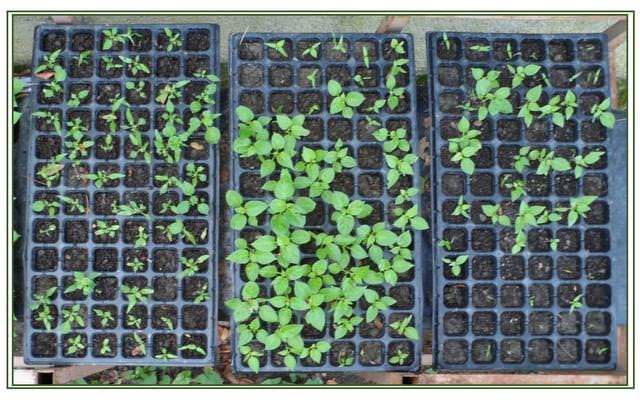
Fig. 2 15-day germinated seedlings, Sweet bell pepper, Capsicum chinense; Paprika, Capsicum annuum and Tomato, Solanum esculentum; Tray 1 (left): compost 1 of Limnocharis flava L., Tray 2 (center): Ranunculus flagelliformis., Tray 3 (right): Eichhornia crassipes.. Author: @lupafilotaxia.
Microbiological analysis
Microbiological evaluations were carried out on three (03) composts based on Limnocharis flava L., Ranunculus flagelliformis, and Eichhornia crassipes, which were made using the aerobic decomposition technique, with weekly turning frequencies for a period of three (03) months and with a C/N ratio of 30:1.
In order to determine the presence or absence of different pathogenic and safety microorganisms, the microbial analysis consisted of the quantification of bacteria and fungi by the plate count method. Once the microorganisms in the compost were quantified, the microflora was isolated and reisolated, and then identified with the help of specialists from the microbiology area of UNESUR.
Germination bioassays
To determine the agronomic viability of composts based on Limnocharis flava L., Ranunculus flagelliformis., and Eichhornia crassipes., germination tests were performed in triplicate.
The tests consisted of germinating seeds of sweet bell pepper, Capsicum chinense; paprika, Capsicum annuum and tomato, Solanum esculentum. The seeds were placed in polyethylene trays of 72 alveoli containing the compost obtained, and the total number of germinated seeds was counted after 8, 15 and 21 days.
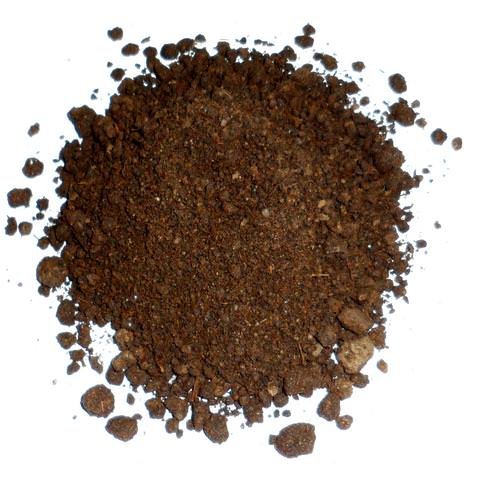 |
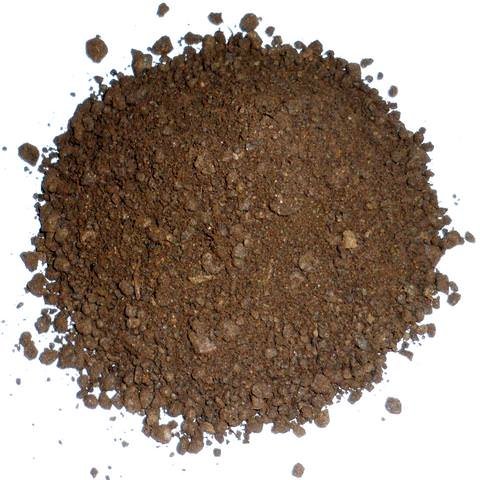 |
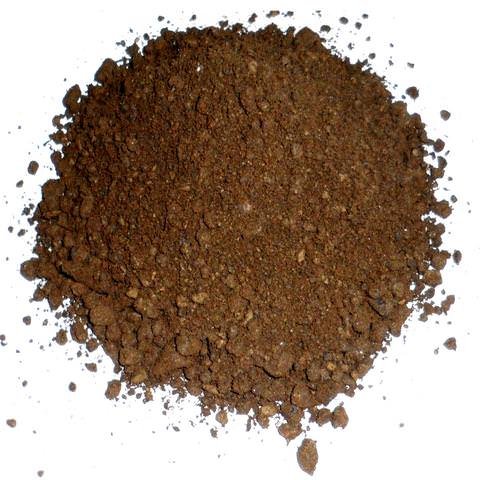 |
Fig. 3, 4 and 5 Granulated material free of phytotoxic elements in the final bioproducts based on Aquatic Macrophytes. Author: @lupafilotaxia.
Interpretive results
Microbiological evaluations
The presence of Fusarium sp, Cercospora sp, Alternaria sp, Phytophthora infestans, Colletotrichum sp, Melminthosporium sp, Sclerotia, microorganisms reported as pathogens, was not found in a wide range of crops.
On the other hand, the microbiological analyses showed that the sanitary quality of the compost based on Limnocharis flava L., Ranunculus flagelliformis., and Eichhornia crassipes., is good, because the presence of Total and fecal coliforms, Salmonella spp Escherichia coli was not observed, indicating that the products obtained do not represent a sanitary risk.
Tabla 1. Absence and presence of crop pathogenic microorganisms in compost made from Limnocharis flava L., Ranunculus flagelliformis., and Eichhornia crassipes L., Limnocharis flava L., Ranunculus flagelliformis., and Eichhornia crassipes.
| Fusarium sp | |||
| Cercospora sp | |||
| Alternaría sp | |||
| Phytophthora infestans | |||
| Colletotrichum sp | |||
| Melminthosporium sp | |||
| Esclerocio |
Abbreviations: (-) and (+) signs indicate the absence and presence of pathogenic microorganism. Author: @lupafilotaxia.
Table 2. Absence and presence of safety microorganisms, in composts made from Limnocharis flava L., Ranunculus flagelliformis., and Eichhornia crassipes.
| Coliformes totales sp | |||
| Coliformes fecales sp | |||
| Salmonella spp sp | |||
| Escherichia coli |
Abbreviations: (-) and (+) signs indicate the absence and presence of microorganisms of harmlessness. Author: @lupafilotaxia.
Germination bioassays
At the beginning of germination, the hypocotyl appeared 8 days after sowing, then the cotyledonal leaves emerged, and after 8 days, the seedlings emerged in an increasing manner.
It is important to highlight that the highest emergence was obtained 15 days after sowing, finding that compost 2 based on Ranunculus flagelliformis had the highest number of germinated seeds in sweet chili and paprika.
While compost 1 of Limnocharis flava, presented the highest in tomato, this can be attributed to the percentage of moisture in the two products, these results allow us to determine the viability and effectiveness of the compost based on these Aquatic Macrophytes, to promote the growth of embryos.
This if we consider that the germination percentages are above 60%, which allows us to deduce that the products are not phytotoxic as established by Graves and Hattemer (2000) in the phytotoxicity tests, as indicators of compost maturity, which indicates that the three composts reached the stabilization phase.
Table 3. Percentage (%) of germination of three species of solanaceae in composts made from Limnocharis flava L., Ranunculus flagelliformis., and Eichhornia crassipes.
| Capsicum chinensi | |||
| Capsicum annuun | |||
| Solanum esculentum |
CONTRIBUTIONS OF THIS PUBLICATION
- The compost obtained does not represent a sanitary or pathogenic risk affecting human health, considering that, in the microbiological evaluations, the presence of Total Coliforms, Fecal Coliforms was not found, Salmonella spp, Escherichia coli, Fusarium sp, Cercospora sp, Alternaria sp, Phytophthora infestans, Colletotrichum sp, Melminthosporium sp, Sclerotia.
- The products prepared are not phytotoxic, since germination percentages higher than 60% were achieved, which allowed determining the viability and effectiveness of the compost based on Limnocharis flava L., Ranunculus flagelliformis., and Eichhornia crassipes., to promote embryo growth.
BIBLIOGRAPHICAL REFERENCES CONSULTED AND CITED:
[1] Dincă M., Ferdes M., and Ungureanu N International symposium recovery of organic waste through composting process / valorificarea prin compostare a reziduurilor organice. 2017. Article: Online access
[2] Rynk R On-Farm Composting Handbook. Natural Resource Agriculture, and Engineering Service. 1992. Article: Online access
[3] Sadzawka A., Carrasco M., Crez R. y Mora MMétodos de análisis de compost. Instituto de Investigaciones Agropecuarias, Serie Actas INIA. 2005; 3: 142. Article: Online access
[4] Tejinder P., Mangal S., Dhanda T., and Singh JBiochemical characterization of consortium compost of toxic weeds Parthenium hysterophorus and Eichhornia crassipe. Bioresource Technology. 2012; 123: 360 – 365. Article: Online access
[5] TMECC US Department of Agriculture. Test methods for the examination of Composting and Compost. 2002. Article: Online access
ATTENTION
Readers and followers
If you wish to read more scientific articles in English or Spanish, of excellent academic quality, do not hesitate to visit #STEMSocial and #STEM-espanol, communities that promote scientific content mainly in the areas of Science, Technology, Engineering and Mathematics.
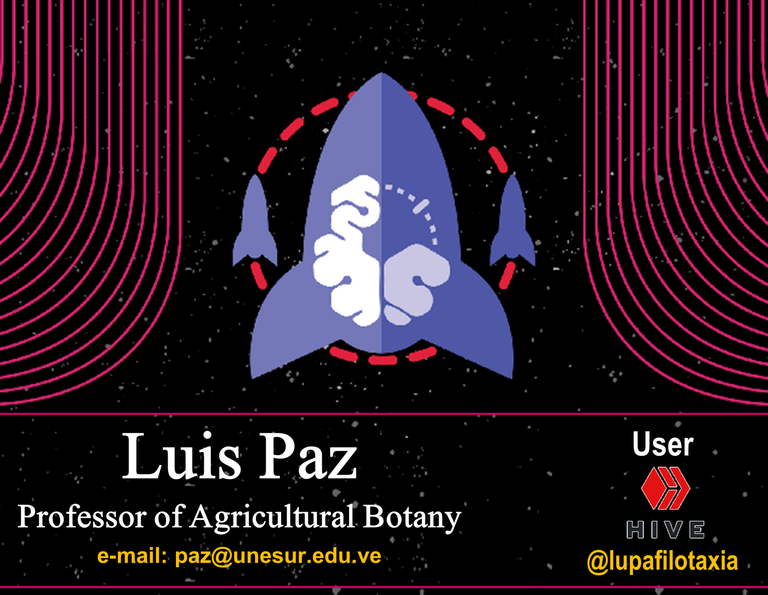
0
0
0.000
Thanks for your contribution to the STEMsocial community. Feel free to join us on discord to get to know the rest of us!
Please consider supporting our funding proposal, approving our witness (@stem.witness) or delegating to the @stemsocial account (for some ROI).
Please consider using the STEMsocial app app and including @stemsocial as a beneficiary to get a stronger support.